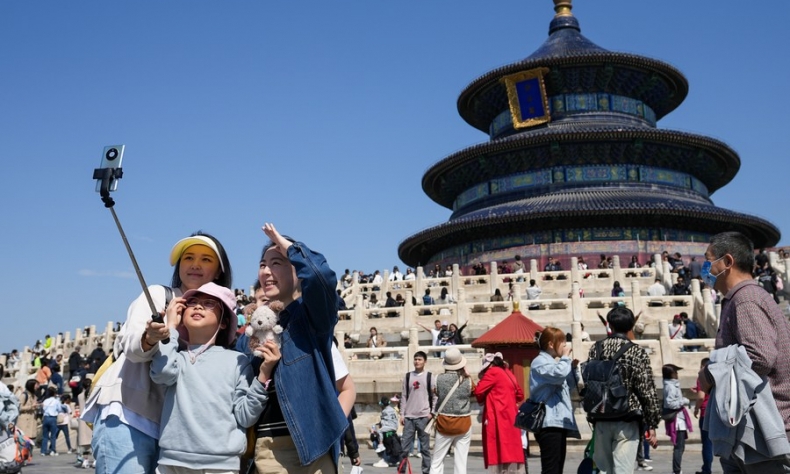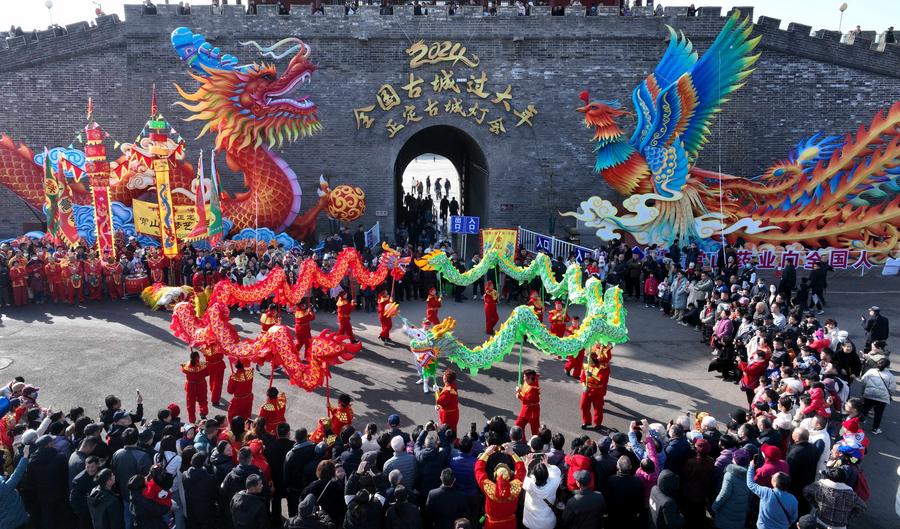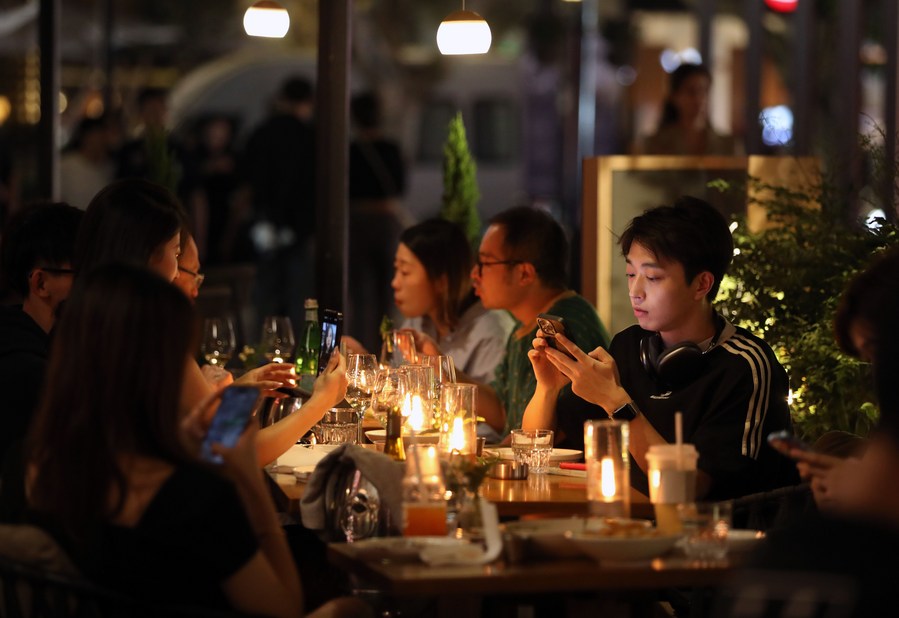Tourism to Play Prominent Role for China’s Economic Transformation

More people from across the globe learn more about the country by visiting and seeing the real China up close and personal.
China’s economy continues to steam-roll ahead, despite the geopolitical headwinds confronting the country and the rising number of sovereign governments embracing populism and trade protectionist measures. Although, Chinese manufacturers had long enjoyed enormous benefits from globalism, as well as American consumers buying up Chinese imports, those glory days are fading away.
Hence, the winds of change are blowing and Beijing has adapted by implementing deeper support for domestic economic circulation – make in China; buy in China – boosting domestic consumption and ramping up the nation’s tourism industry.
In the country’s economic transition, services are playing a dramatic role and will become more important. Meanwhile, part of the Chinese government’s strategy is to step up tourism, both for Chinese citizens to travel within the country’s territories for leisure and to welcome more inbound foreign visitors.
Since last December, China has adopted a visa-free policy for six countries, including France, Germany, Italy, Netherlands, Spain and Malaysia. At a press conference on March 7, Chinese Foreign Minister Wang Yi announced a visa-free policy for another six European countries, including Switzerland, Ireland, Hungary, Austria, Belgium and Luxemburg.
More cash flows from tourism can spread to Chinese households and businesses, along with increasing tax revenues for local and provincial governments. Therefore, Beijing is taking bold steps to secure a more prosperous tourism sector in the country.
We have already witnessed some amazing results in the first two months of this year. China celebrated its eight-day Spring Festival holiday on February 10-17 and according to figures reported by China’s Ministry of Culture & Tourism, Chinese tourist trips stood at 474 million during this timeframe. That’s 34 percent higher from last year and 19 percent above from 2019, before the COVID pandemic.
China’s domestic consumption during the holiday season surged to 632.7 billion yuan, which is a 47 percent increase from the same period a year ago. It’s also 19 percent higher from 2019.

China’s tourism still needs some upgrades
The Spring Festival holiday was successful for China’s tourism overall, but it’s time for reflection on how to inspire more people from outside the country to visit. China holds outstanding qualities such as its ancient civilization, historical attractions, lovely natural scenery and modern amenities.
Yet, China’s tourism industry has significant weak points as well. I cite from my experiences when visiting my wife’s rural hometown in rural Western China’s Shaanxi Province. We drive and the road trip from Beijing to her hometown is nearly 1,200 kilometers, one way. The highways are good quality and gas stations can be easily found.
Nonetheless, their bathroom facilities cause many Westerners, including myself, to harbor grave concerns. Westerners have grown accustomed to using American-style toilets and they perceive Chinese-style toilets as “primitive”.
American toilets can only be found in bathrooms that are designated for the handicapped and elderly. They have signs on those doors, so a healthy Westerner feels publicly shamed by using them. That’s creating a cultural stigma against foreigners.
China should construct more American toilet bowls in bathroom facilities at popular gas stations, rest stops and tourism sites even in rural regions. They should not label such bathrooms with American toilet bowls as designated solely for the handicapped or elderly.
Chinese tourist officials should also find ways to improve crowd control measures. Most popular tourist sites are so crowded that visitors feel claustrophobic and parking spaces aren’t large enough for holiday and weekend visitors.
Many public areas, only have a few seats for people to sit down. Tourists hoping to stay at a popular site for a long time, discover that they must stand or walk the entire time and this makes them tired and feel eager to return to their hotel room to recuperate.
Business tourism and nightlife can be trendy
In order for major Chinese cities to lure in more foreign arrivals by promoting more nightlife and business tourism. In many designated nighttime zones in the country, they are focused on attracting families rather than business visitors. Family-oriented tourism is distinctly different than business travel.
Foreigners arriving in China for a business purpose are expected to attend formal meetings, conferences and discuss important matters. Therefore, they hope to relax in the evenings. They care more about the night life.
Many young business people in their 20s and early 30s are single. They might want to drink at a bar, dance at a night club and meet people who are their same age with similar backgrounds.

When China boosts its business tourism that can attract more inbound foreign direct investments. This explains why the favorite destination in China for European travelers is Shanghai, since the city is the business hub of the country.
According to Euro News Travel, “Shanghai remains the most popular destination among Europeans with its alluring blend of modernity and tradition, followed by Beijing, Guangzhou and Shenzhen.”
Shanghai has a vibrant nightlife for young adults. Shenzhen has taken similar steps to boost its nighttime economy. A good recommendation is for Municipal governments to permit the opening up of more outdoor food stalls’ zones, while providing sufficient space for tables and diners to sit, eat and drink.
The summer is best for going outside at night and eating Chinese BBQ or other delicious foods. Singapore has become famous for promoting its nighttime economy, many locals and visitors are happy to eat and drink outside. Chinese cities should follow up on this model.
Shining a light on soft power
As an attractive destination for tourists, China has plenty to offer. It’s a large country with much variety on full display. For foreigners thinking about taking a trip to the country, it’s best to understand its regional landscape. China’s southern and eastern coastal cities are more modern and prosperous.
But northern and western China have some amazing features as well. The northern region has cold winters, while Beijing, Xi’an and Harbin have unique qualities that can attract certain types of globe-trotting travelers. China’s capital city is famous for its Forbidden City, Xi’an has Terracotta Warriors and Harbin celebrates its annual Snow & Ice Festival.
As China’s tourism turns more vibrant, the domestic economy can shift to a services-oriented society. Additionally, more people from across the globe learn more about the country by visiting and seeing the real China up close and personal.
Tourism is a grand way for the Chinese to open up their arms to the world and it could generate higher incomes for them.
The article reflects the author’s opinions, and not necessarily the views of China Focus.
 Facebook
Facebook
 Twitter
Twitter
 Linkedin
Linkedin
 Google +
Google +



